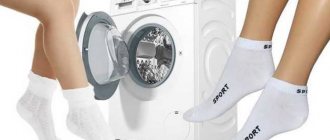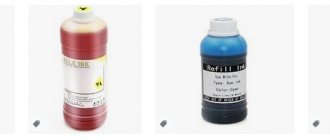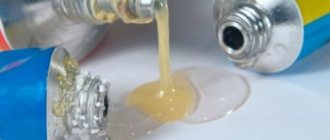0 /5
20.11.2021
197
White socks are an indispensable element of almost any wardrobe, both men's and women's. However, caring for them can cause a lot of difficulties, since the white material gets dirty quickly and is not always cleaned after regular washing. Let's look at the features and methods of cleaning even the most dirty and worn white socks.
Rules and recommendations for washing
Before proceeding directly to washing, it is necessary to mechanically clean your item of clothing from dust, sand or other visible contaminants. This will greatly simplify subsequent work and allow you to wash the material efficiently.
It is also recommended to take into account the following nuances:
- You should wear a pair of socks for no more than one day, since the dirt has not yet had time to eat into the fabric and is much easier to get rid of.
- White socks should be washed separately from other laundry, especially colored ones.
- Before putting socks into the machine drum or washing them by hand, it is recommended to thoroughly rub them with soap and leave them in water for several hours.
- Heavily soiled laundry should not be washed in very hot water, because in this case the dirt will eat into the fabric even more.
- Turn your socks inside out before putting them in the washing machine.
Preparing for washing
Simple preparation before washing will restore the whiteness of the products and protect them from possible troubles. Here's what to do:
- Separate from colored laundry so that it does not fade during washing and does not stain white socks.
- Clean the socks from any debris, turn them inside out and shake out.
- Prepare detergents.
- You can pre-soak it, which will make it easier to remove dirt.
The water for soaking should be no higher than 30°C so that the dirt does not stick to the fabric more strongly.
What tools to use
To clean white socks, stockings or tights, you can use both special products and improvised materials that are present in the arsenal of every housewife.
The first include such bleaches as the budget Bos Plus Maximum or the more expensive Astonish OXY PLUS. Laundry soap with a whitening effect copes well with stubborn stains.
If you don’t have a branded stain remover on hand, you can make your own at home. To do this you will need substances such as:
- lemon juice;
- boric acid;
- hydrogen peroxide;
- table vinegar;
- ammonia.
However, before choosing the appropriate composition, you will need to determine what material your product is made of. The washing method will directly depend on this.
Useful tips
Knowing the rules for handling such things will help rid white socks of dirty stains and ensure that the process of cleaning them is not difficult.
- Before putting on white socks, you need to check the condition of your feet. It is important. Especially if the fabric gets dirty quickly. When dirt is present on the soles of your feet, your socks will quickly lose their cleanliness. As you walk, dirt will get into the inside of your socks. It will be difficult to bring things back to their original state.
- When wearing white socks, use only light-colored insoles. If you take a dark sole, it can stain the fabric very strongly, and it will be very difficult to wash off such dirt. With a white sole, such an incident will not occur.
- White socks are washed often, as they become dirty literally on the first day of wearing. For fresh stains on fabric, no special effort is required when washing. If socks are not washed for a long time, the dirt can become so deeply embedded in the white fabric that it can be removed with great difficulty, using strong special products.
How to wash white socks from different types of fabric at home
Cotton
To bleach cotton socks at home, you are allowed to resort to boiling, which is strictly prohibited from doing with things made of synthetics or wool.
Soaking cotton products can be done using the following components:
- Table vinegar. Take 1 teaspoon of vinegar and dilute it in 1 liter of plain water. Soak in the resulting liquid for 30 minutes, then wash by hand or in a washing machine. To enhance the effect, the liquid can be heated to 40 degrees, and you can also add a small spoon of citric acid or a drop of detergent to it.
- Boric acid. This medicine is well known for its whitening properties. For proper use, you need to mix 1 tablespoon of acid in 1 liter of warm water. After 2 hours, clothes must be washed by hand or machine.
- Ammonia. Pour two tablespoons of ammonia into a container containing 1 liter of water. Soak the item of clothing in it for 2-3 hours, then rinse thoroughly and wash in a machine or by hand.
Synthetic
Synthetics require more delicate handling. It is recommended to remove stains with the following substances:
- Laundry soap. Rub the stained areas thoroughly with soap and a small amount of water. Products can be left in a soap solution from half an hour to a day, depending on the degree of contamination. After soaking, rinse and dry them.
- Lemon juice. To prepare the cleansing mixture, you need to squeeze one tablespoon of juice from a ripe fruit, add it to warm water and place the laundry there for 30-60 minutes. After this, you will need to rinse them and wash them in any convenient way. If this procedure does not help to completely clean the laundry, you need to apply lemon juice, sprinkle the powder on the contaminated areas and rub them. After this, you need to wash your clothes again.
Woolen
Wool socks also require special care. They should not be washed in hot water or rubbed vigorously. This may cause the product to lose shape and stretch.
To wash white wool socks, you can use the following substances:
- Baking soda. Add a pinch of baking soda to a basin of slightly warm water. Soak the products in the resulting solution for 2-3 hours, then wash them with your hands. When using a washing machine, you can also pour one tablespoon of soda into the rinse aid compartment. It is worth remembering that when express washing wool in a machine, you need to choose a mode with a low temperature of up to 40 degrees.
- Hydrogen peroxide. This gentle product does an excellent job of bleaching woolen items. When preparing the solution, the following proportions must be taken into account: 1 tablespoon per 1 liter of water. Leave the socks in the solution for several hours and then wash them.
Important. When using special equipment. It is recommended to protect your hands from their negative effects with gloves.
Questions and answers
If the socks have decorative inserts (for example, made of lace or guipure), can any products be used for them? Yes, except for bleaches that contain chlorine. This way you will maintain the quality and appearance of the decorated inserts.
How long can you wear one pair of white socks?
To ensure that socks do not get too dirty and retain their snow-white color for a long time after washing, it is recommended to wear them only once. Accordingly, you will have to change your socks daily.
What is the best water temperature to use for washing or bleaching socks?
Before washing, be sure to read the tag on your socks and take into account their composition, since different materials are washed at different temperatures. For example, socks with added wool are recommended to be washed at 30°C, if they contain polyester or viscose - 40°C, and if they are made of cotton or linen - up to 60°C.rnrnIn any case, the higher the water temperature, the easier it will be to wash and bleach the stained fabric.
Is it possible to rub, wring out and twist socks?
Any mechanical impact on the fabric can damage it or reduce wear resistance; take this into account when washing white socks. You can do anything with them, especially when it comes to rubbing them with soap before the main wash, the main thing is not to overdo it and do everything carefully.
Is it better to wash white socks by hand or machine?
To wash them better, pre-wash them by hand and soak them briefly, then machine wash them. Be sure to add a few tennis balls to the drum to increase the friction of the material being cleaned and, accordingly, the washing efficiency.
Removing paint from shoes
Often, the main problem that lovers of light-colored clothing encounter is the dyeing insole of their shoes.
Even after several hours of wearing, we are saddened to admit the fact that our favorite socks have turned dark due to low-quality shoe dyes. In this case, do not despair, because there are a number of effective methods on how to wash white socks from dirt.
For cotton items, bleach containing chlorine is ideal. For these purposes, you can safely use Domestos or any other similar special product containing chlorine.
Dilute Domestos with water in proportions of 1 to 1 and apply the resulting solution using a cotton swab to problem areas.
It is worth remembering that chlorine is a potent substance, and therefore it is forbidden to leave it on things for a long time.
After soaking, it must be thoroughly rinsed and washed.
For woolen and synthetic products, you can use pure juice obtained from lemon. It is enough to squeeze a few drops onto the contaminated material and wait 10-15 minutes, then wash it.
If the result is not satisfactory, you can use peroxide.
To effectively wash white socks from black soles, the concentration of peroxide can be doubled.
Thus, you will need to dilute 2 tablespoons of the product per 1 liter of water and keep the items in it for 10-15 minutes, then rinse in warm water.
To remove stubborn dirt from the soles, you can use a combination of sodium percarbonate and dishwashing detergent.
After mixing these mixtures in equal proportions, add a little water and apply the resulting mixture to areas that cannot be washed. After about an hour, wash the socks by hand. This method usually does a great job of restoring clothes to their original appearance.
Additional recommendations
When washing socks you should not:
- Wash linen and towels at the same time. In conditions of the basin, this is not hygienic, because it is difficult to rinse the terry cloth thoroughly, and it is easy to carry residual dirt onto the skin or into the eyes. In addition, washing conditions for towels are more stringent than for socks.
- If your feet suffer from sweating or fungus, it is recommended to soak your socks in a relatively strong solution of citric acid or other disinfectant before washing.
- For socks, double rinsing is advisable: if clumps of powder or bleach remain between the fibers, the soles will get dirty many times faster, and skin irritation and allergies are possible.
- It is highly recommended not to boil socks. Even durable cotton socks contain elastane thread - it will lose its properties and the socks will not stay on the foot. And the cotton fabric will most likely shrink, and the laundry will become small and slide off the heel.
Maintaining or restoring the whiteness of socks is both a difficult and simple task. As practice shows, it is enough to change socks as soon as a gray coating appears on the soles to preserve the shine of the color. And to avoid pilling and extend the life of your socks, you need to wash them carefully: in a net if in the car, and after soaking, without effort, if on your hands. Then the linen will be white and attractive for a long time.
Removing gray spots and yellowness
As a result of frequent washing, light-colored items tend to darken and lose their former appearance. In this case, do not rush to throw away your socks.
There are several miraculous ways to help restore your snow-white appearance:
- Severely grayed items can be bleached using turpentine. Take 3 tablespoons of liquid with a pungent odor and dilute it in a 10-liter bucket of water, adding a few tablespoons of regular washing powder. After thoroughly stirring, leave the items in the resulting mixture overnight, then wash as usual.
- Chlorine-containing products also do an excellent job of removing gray spots and yellow discoloration. However, they can only be used on clothing items made of cotton. Pour 2 tablespoons of liquid into 2 liters of water and add 100 grams of washing powder. After thoroughly mixing the mixture, leave the clothes in it for one night, then wash them.
- You can make a stain remover at home using hydrogen peroxide and ammonia. To do this, mix the ingredients in proportions of 1 to 2 and apply the mixture to problem areas.
- Another bleaching method is to use a mixture of laundry detergent and dishwashing detergent. To prepare it, you need to squeeze out a few drops of washing liquid into one tablespoon of powder and foam it. Apply the solution directly to stubborn stains and wash with your hands after 10-15 minutes.
- An equally effective way to return things to a presentable appearance is to use special stain removers. A wide range of store-bought products offer many different ingredients for whitening items. When using stain removers, it is recommended to follow the instructions exactly to avoid unforeseen situations.
Please note that it is advisable to dry things away from sunlight. Otherwise, the yellowness may return and it will no longer be possible to remove it.
The best option would be to dry it outside in the shade, which will also help rid things of a specific smell.
Important. When using special chemicals, it is recommended to limit the time they remain on the fabric to a minimum. Otherwise, damage to the fiber structure may occur.
Removing contaminants by boiling and digestion
This method is recommended for use in extreme cases. Boiling white socks is justified if the products have deep, ingrained dirt. It is also recommended to boil things in cases where they have lost their whiteness.
White hosiery should be boiled to disinfect it. This applies to cases where things have been in contact with a source of bacteria and viruses for a long time.
Boiling is the only option for removing dirt from white socks if a person is allergic to chemicals or homemade laundry products.
It is recommended to boil hosiery according to the following scheme:
Take an enamel or stainless steel pan and pour 2 liters of water into it.- Load laundry into it.
- Add your choice of either 30 g of grated laundry soap, or a mixture based on 110 g of washing powder and two large spoons of bleach. You can use a mixture based on 35 ml of ammonia and 160 g of soda.
- Place the container on medium heat.
- After the solution with the laundry boils, reduce the heat and simmer for 15 minutes. For severe stains, you can boil things for half an hour.
- During the process of boiling hosiery, it is necessary to periodically turn them over with special tongs.
- After boiling, things are rinsed.
Only white socks made of cotton, linen or bamboo can be boiled. Synthetic and wool products must not be processed using this method .
Boiling
Once upon a time, boiling was almost the only way for housewives to clean light-colored clothes from stubborn dirt.
Currently, it is one of the methods that is resorted to in the most extreme cases. In order for boiling to give the desired result, you need to follow simple rules:
- Only cotton clothing items are allowed to be boiled.
- It is recommended to boil in enamel containers or stainless steel vessels.
- For every kilogram of things you will need about 10 liters of liquid.
- The detergent component must be thoroughly dissolved.
- The container should only be heated after loading laundry.
- Before boiling, it is advisable to soak in a similar solution to enhance the effect.
Ready-made stain removers
The stain remover is added to the washing machine or the product is soaked in it for an hour, preparing the solution according to the instructions.
- Domestos (Domestos) . Not exactly a target product, so I’ll immediately give you the recipe for the solution. Dilute the product with warm water 1:1. Soak the socks for 5 minutes and wash. Domestos contains chlorine and can leave white stains on colored clothes.
- Aquarius (Aquarius) . Italian oxygen stain remover. Confidently and effectively removes stains from white or colored items. Not suitable for wool, silk, delicate fabrics.
- Vanish Oxi Action (Vanish) . Removes fresh stains and disinfects clothes. Add to the powder when washing in a basin or machine, as well as when soaking things. Doesn't remove old stains well, but is very effective at removing fresh dirt.
- "Bos" . Oxygen bleach, in the product line for white and colored laundry. Gently removes stains during soaking and during the main wash. Disinfects textiles. A good budget product.
- "Myth" . Washing powder for white and colored clothes. Acts as a washing powder activator and as a stain remover. Removes dirt quite well. Easily rinsed out of fibers.
- "Sarma" . Bleach works even in cool water and is used for both hand and machine washing. Safe for all types of fabrics.
- Dosia (Dosya) . Effective at temperatures 30-60℃. It also easily removes stubborn stains.
- "Eared Nanny" . The product contains only non-aggressive components, so the product is suitable for any fabric. Effective against stains and stubborn odors.
- Ase (Ace) . Also suitable for hand and machine wash. It not only whitens stains, but also refreshes the entire item. Removes gray plaque that has appeared over time.
- Synergetic (Synergetic) . Suitable for wool, silk or cotton. Removes dirt stains and traces of faded paint. A line of safe, environmentally friendly products.
How to wash white socks by hand
To wash light-colored socks at home, many housewives prefer hand washing. This method is often effective and helps get rid of contaminants.
It is recommended to clean cotton material in hot water, while for synthetics and wool the temperature should not exceed 40 degrees.
To clean cotton and wool fabrics, you can use soap products and washing powders. It is better to wash synthetics using BIO powders with enzymes and special gels.
Hand washing procedure
To wash things you need:
- Pre-soak short stockings in warm water for two hours.
- Wring out the products and turn them inside out.
- Pour clean warm water into the basin.
- Pour washing powder into the water. Only use a product specifically designed for white laundry.
- Foam water and immerse clothes in it.
- Wash each sock by rubbing. It is important to rub things lightly, otherwise they will stretch or tear.
- Spin out washed laundry. When doing push-ups, do not twist the products. You just need to gather the socks into a ball and then lightly squeeze them in your fist.
Do not use hot water to wash white underwear. The optimal water temperature should be no more than 40 C.
How to machine wash white socks
Often, a washing machine cannot guarantee a 100% result in cleaning clothes from stubborn dirt.
Even a special “white” mode does not always help with high-quality washing. But don’t get upset ahead of time, because in this situation there are several secrets that will make the task easier.
- Before throwing your socks into the drum of the washing machine, soak them for a certain time using the method described above. If your machine has a pre-wash option or a soak mode, use them.
- Turn your socks inside out. This will help remove dirt from the fabric structure faster.
- To enhance the effect, place special balls or regular tennis balls in the drum of the machine, which will knock out stubborn dirt.
- When washing cotton and synthetic linen, you can use conventional automatic washing powders. For wool, it is recommended to choose special powders that do not disturb the wool fibers.
- Pour the previously prepared soda solution into the rinse aid compartment. You can prepare it by stirring 1 teaspoon of baking soda in a glass of water. This way you can return the white color to faded items.
Do you know why you dream of doing laundry in a dream?
"Lazy" solutions
In addition to the standard methods of “reanimating” light-colored hosiery, there are also unusual solutions. They are usually practiced by avid bachelors themselves and recommended to others.
Tennis balls
Peculiarities. It is enough to add a few balls to the drum of the washing machine along with the clothes, which will make it possible to create a good mechanical effect and quickly “beat” dirt from the fibers. However, first make sure that the balls themselves do not shed by keeping them in warm water.
Procedure
- Place socks in the washing machine drum.
- Place two or three tennis balls there.
- Turn on normal wash cycle.
How to keep socks white
In order for them to always be white, it is enough to follow a number of simple rules:
- Make sure your feet are clean before putting them on. A dirty foot can stain the fabric no less than external influences in the form of dirt or sand.
- Avoid wearing socks with dark shoe insoles. When exposed to moisture, it colors the fibers, and the paint settles firmly inside.
- Try not to wear underwear for more than one day, and wash them immediately afterwards.
- Before washing, soak your laundry using one of the tips above. Pre-soaking often eliminates further manipulation.
- Pay attention to the label and composition of the material. Wool, synthetics, and cotton require different care methods.
- Wash light-colored fabrics separately from colored ones. Even faded colors can leave pigment on light-colored fabrics.
- Follow the washing schedule. Cotton and synthetic fabrics are washed at a maximum temperature of 40 degrees.
- Products treated with acid for bleaching must be dried in fresh air, avoiding exposure to ultraviolet radiation. The sun's rays leave bright yellow spots, which are almost impossible to get rid of in the future.
Share what whitening methods you use in the comments. Don't forget to join us on social networks and share the article with your friends.
Selecting the washing mode of the washing machine
Use the “prewash” mode for heavily soiled items. If your socks are not too dirty, you don’t need to soak or wash them. Before putting things into the machine, set the mode correctly: it must match the type of fabric. Set the desired temperature. Cotton, nylon and synthetic socks are suitable for a temperature of 60 degrees and any washing detergent.
You need to save up socks first so as not to idle the car
Wash children's socks separately from adults.
There are times when socks are very similar in color and pattern, and you don't want to mix them up. Then use special clothespins and connect the “twins”. This way they won’t get lost until the end of the wash and won’t get mixed up.
Special clothespins for socks will help you avoid losing your half
It happens that after washing in the machine, one or two socks are lost, which fall into the gap between the inner wall of the machine body and the drum. If this happens to you, wash your socks in a special bag.
During washing, socks often get caught in the gap between the inner wall of the machine body and the drum
You can use bags to wash socks by washing them with other items. Please keep in mind that all clothing must be made from the same or similar material and color, and also have the same degree of soiling.
The bags can be used when washing socks with other items
There is no need to rinse after machine washing. Dry the items in pairs and then fold them together, cuff to cuff.
After washing, be sure to dry it
How to wash socks - video
How to wash light-colored items
To effectively wash white or light-colored socks, add 150–200 grams of soda to the powder compartment, it will give a whitening effect. For the same purposes, 3-4 tennis balls, which are placed in the drum of an automatic machine, are suitable. Due to their mechanical action, socks are washed better.
Tennis balls can also be used for hand washing. Place a sock on one ball and use the other to thoroughly rub the soapy, dirty surface of the product. Due to friction, the sock washes off much faster.
Why can't you wash it with your underpants?
Panties and underwear are classified as intimate items. They require ideal hygiene conditions. In this regard, socks should be washed separately from all other things.
You should not put socks in the washing machine together with underwear, jeans, towels, or handkerchiefs.
If there is a fungus
People suffering from nail fungus need to change their socks every day and wash them using rubber gloves. The temperature in the washing machine should be set at least 90 degrees. When hand washing, they should be thoroughly boiled with the addition of soda or hydrogen peroxide. After drying, the products are ironed on both sides with a hot iron.
Whitening
You can use many products to whiten things:
- dishwashing gel;
- mustard powder;
- potassium permanganate;
- whiteness (chlorine);
- purchased substances.
Expert opinion
Any bleach will wear out the fabric if used frequently. Therefore, it is better to wash your socks at the slightest contamination.
Using bleach











